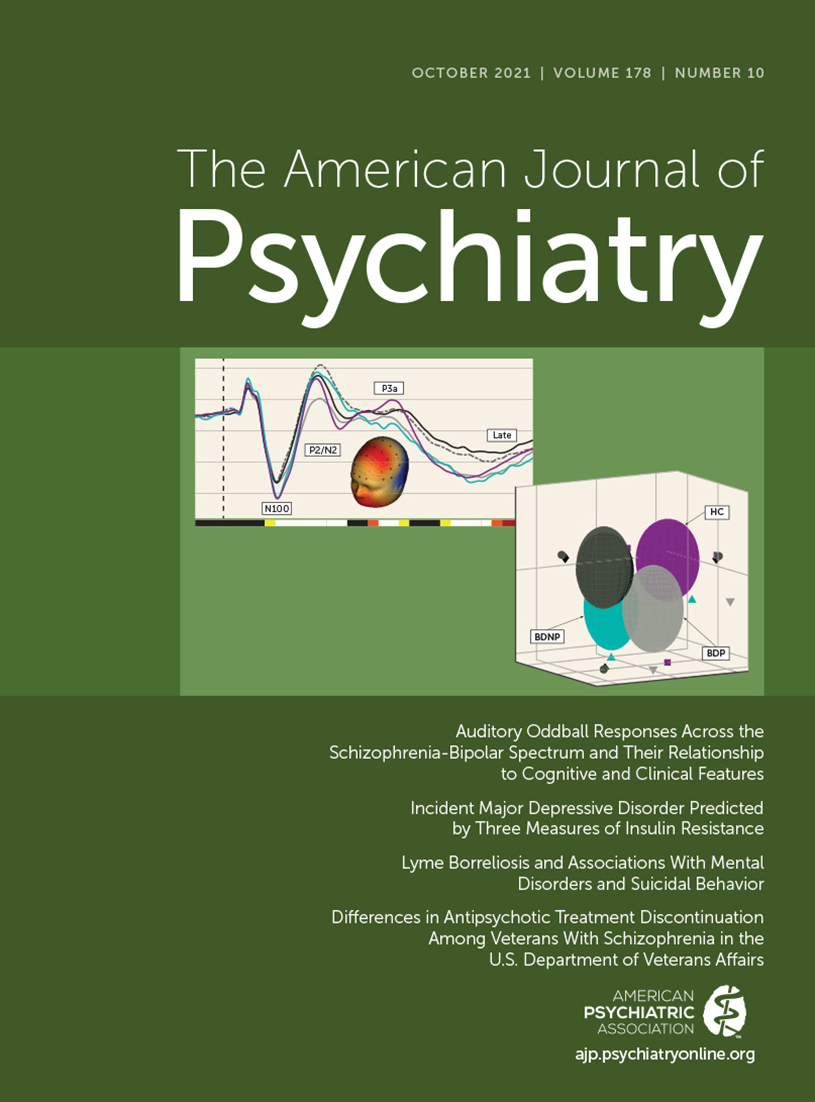Auditory Oddball Responses Across the Schizophrenia-Bipolar Spectrum and Their Relationship to Cognitive and Clinical Features
Abstract
Objective:
Neural activations during auditory oddball tasks may be endophenotypes for psychosis and bipolar disorder. The authors investigated oddball neural deviations that discriminate multiple diagnostic groups across the schizophrenia-bipolar spectrum (schizophrenia, schizoaffective disorder, psychotic bipolar disorder, and nonpsychotic bipolar disorder) and clarified their relationship to clinical and cognitive features.
Methods:
Auditory oddball responses to standard and target tones from 64 sensor EEG recordings were compared across patients with psychosis (total N=597; schizophrenia, N=225; schizoaffective disorder, N=201; bipolar disorder with psychosis, N=171), patients with bipolar disorder without psychosis (N=66), and healthy comparison subjects (N=415) from the second iteration of the Bipolar-Schizophrenia Network for Intermediate Phenotypes (B-SNIP2) study. EEG activity was analyzed in voltage and in the time-frequency domain (low, beta, and gamma bands). Event-related potentials (ERPs) were compared with those from an independent sample collected during the first iteration of B-SNIP (B-SNIP1; healthy subjects, N=211; psychosis group, N=526) to establish the repeatability of complex oddball ERPs across multiple psychosis syndromes (r values >0.94 between B-SNIP1 and B-SNIP2).
Results:
Twenty-six EEG features differentiated the groups; they were used in discriminant and correlational analyses. EEG variables from the N100, P300, and low-frequency ranges separated the groups along a diagnostic continuum from healthy to bipolar disorder with psychosis/bipolar disorder without psychosis to schizoaffective disorder/schizophrenia and were strongly related to general cognitive function (r=0.91). P50 responses to standard trials and early beta/gamma frequency responses separated the bipolar disorder without psychosis group from the bipolar disorder with psychosis group. P200, N200, and late beta/gamma frequency responses separated the two bipolar disorder groups from the other groups.
Conclusions:
Neural deviations during auditory processing are related to psychosis history and bipolar disorder. There is a powerful transdiagnostic relationship between severity of these neural deviations and general cognitive performance. These results have implications for understanding the neurobiology of clinical syndromes across the schizophrenia-bipolar spectrum that may have an impact on future biomarker research.



